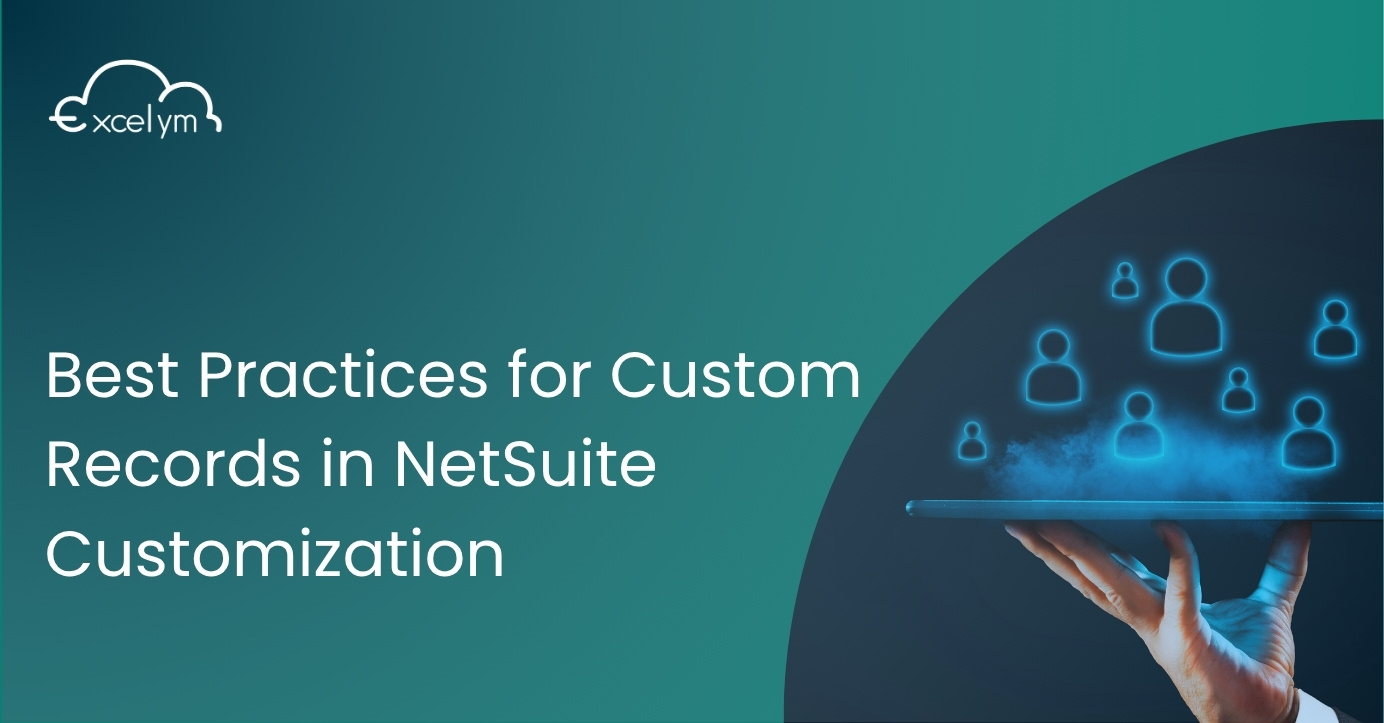Last Modified: July 2nd, 2025
3 min read

Introduction
Custom records are one of the most versatile tools for tailoring NetSuite to align with specific business needs. They enable NetSuite Administrators and Developers to go beyond the platform’s standard data tables, allowing businesses to capture and analyze additional data points critical to their operations. By extending NetSuite’s built-in functionality, custom records open up opportunities to create solutions that are uniquely suited to an organization’s workflow.
Custom records are a key feature in NetSuite, forming the foundation of many bundles and SuiteApps while enabling businesses to tailor the platform to their needs without extensive coding. They streamline workflows, automate processes, and capture essential data efficiently. To get the most from custom records, start simple, plan data points carefully, and utilize features like saved searches, parent/child relationships, and permission management. Combining them with workflows and SuiteScripts can further enhance functionality and efficiency.
Simplify NetSuite Custom Record Management with Automation
Manually managing and migrating NetSuite custom records can be time-consuming and error-prone. Mistakes, such as incorrect settings or security configurations, can lead to serious issues like unauthorized data access. Complex customizations involving scripts, workflows, and dependencies further complicate deployments, increasing risks and delays. Automating environment comparisons and seamless deployments can save time and reduce errors for NetSuite Admins.
Best Practices for Optimizing NetSuite Custom Records
- Start Simple and Plan Carefully – Keep the design simple, adding complexity only when necessary, and focus on essential data points. Avoid cluttering the interface with unnecessary fields that could overwhelm users. Involve end users to ensure the solution is intuitive, efficient, and meets their needs.
- Understand Custom Record Behavior – Familiarize yourself with the available settings, checkboxes, and options within custom record configurations to maximize their functionality.
- Establish Parent-Child Relationships – Organize your data by linking custom records to parent records through custom fields. This adds structure and clarity to your system.
- Document Everything – Create detailed documentation that explains the purpose, setup, and related scripts or workflows for your custom record. This will make troubleshooting and updates much easier down the road.
- Use Deployment Tools – When moving your custom records from Sandbox to Production, deployment tools can minimize human error and ensure a seamless migration.
- Provide Thorough Training – Educate users on how to work with the custom record effectively. Include helpful field-level notes and clear instructions to improve adoption and usability.
- Use Custom Record Permissions Wisely – Control access by setting the “Access Type” field to “Require Custom Record Entries Permission.” This ensures only authorized users can view or edit your custom records.
- Integrate Custom Records Into Your Processes – Use custom records to improve workflows and scripting. They can simplify parameter passing, reduce hardcoding, and support complex processes like custom approval workflows.
- Explore Pre-Built and Built-In Solutions (e.g. Saved Search) – Before diving into custom development, check the SuiteApp Marketplace for ready-made solutions that can save you time. Additionally, leverage built-in features like saved searches to filter, summarize, and analyze data within your records, making it easier to uncover valuable insights and boost usability.
Get a Detailed Review of Your Custom Record Configuration
Custom records in NetSuite provide powerful ways to tailor the system to your business needs, but it’s always worth exploring pre-built options in NetSuite and the SuiteApp marketplace first. These tools can address common industry challenges while reducing the need for complex customizations. By leveraging available resources, NetSuite Administrators can streamline workflows, optimize operations, and ensure customizations are manageable and effective.
Managing NetSuite customizations, particularly custom records, can be complex and risky without the right expertise. While native tools like Copy to Account, SuiteBundler, and SuiteCloud Development Framework (SDF) offer solutions, they often come with limitations. Excelym, as a trusted professional services provider, leverages advanced tools and best practices to streamline the customization process.
Serge is a Managing Partner and the head of sales and business development.
Published on: May 21, 2025
